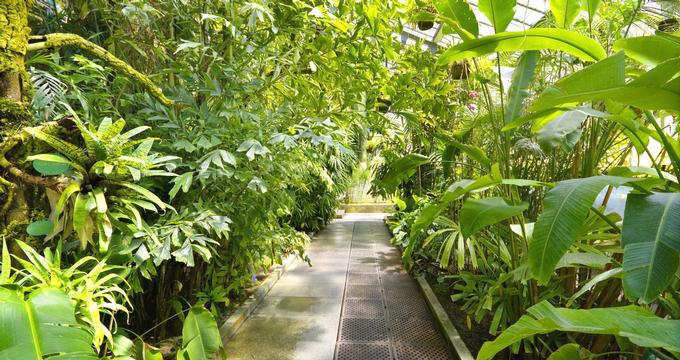“The Howard Peters Rawlings Conservatory and Botanic Gardens are located in Baltimore, Maryland.”
I Found This Great For:
Plant lovers and garden enthusiasts
Explore tropical, desert, and Mediterranean climates under one historic Victorian glass roof
History and architecture buffs
Admire Baltimore’s 1888 iron-and-glass Palm House—second oldest in the nation
Families and young learners
Engage in hands-on exploration, science demos, and preschool-friendly Sprouts programs
Art and culture seekers
Discover rotating exhibits like the Emergence Art Series featuring Baltimore-area artists
Highlights & Amenities
- Palm House: Iconic 1888 Victorian conservatory showcasing towering palms and tropical flora
- Desert House: Features cacti, succulents, and Joshua trees in extreme temperature conditions
- Orchid Room: Displays a vibrant rotating collection from over 30,000 orchid species
- Tropical & Mediterranean Houses: Explore global biodiversity from equatorial rainforests to coastal dry climates
- Sundial Garden: Historic 1890 sundial surrounded by more than 30 vibrant flowerbeds
- Greenhouse Gallery: Hosts exhibits such as the annual Emergence Art Series
Special Features
- Historic Significance: Baltimore City Landmark listed on the National Register of Historic Places
- Educational Programs: Self-guided and docent-led tours, lectures, workshops, and garden clinics
- Children’s Activities: Weekly Plants & People stations and Sprouts programs for preschoolers
- Seasonal Events: Annual poinsettia and spring bulb shows, and Druid Hill Farmer’s Market
Insider Tip
Visit during the spring bulb show to see dazzling displays of tulips, hyacinths, and daffodils—many of which are available for purchase and perfect for planting at home.
Nearby Attractions
- Druid Hill Park: Historic urban park featuring lakes, trails, and 19th-century architecture
- The Maryland Zoo: One of the oldest zoos in the U.S., home to nearly 200 species
- Rawlings Fountain: Picturesque park centerpiece near the Conservatory entrance
- Baltimore Museum of Art: World-renowned collection just a short drive away
Visitor Information
Location: 3100 Swann Dr, Baltimore, MD 21217
Phone: 410-396-0008
Website: rawlingsconservatory.org
Hours: Vary by season and event schedule—check website for details
Admission: Free or donation-based; special exhibits may have a fee
Plan Your Trip


